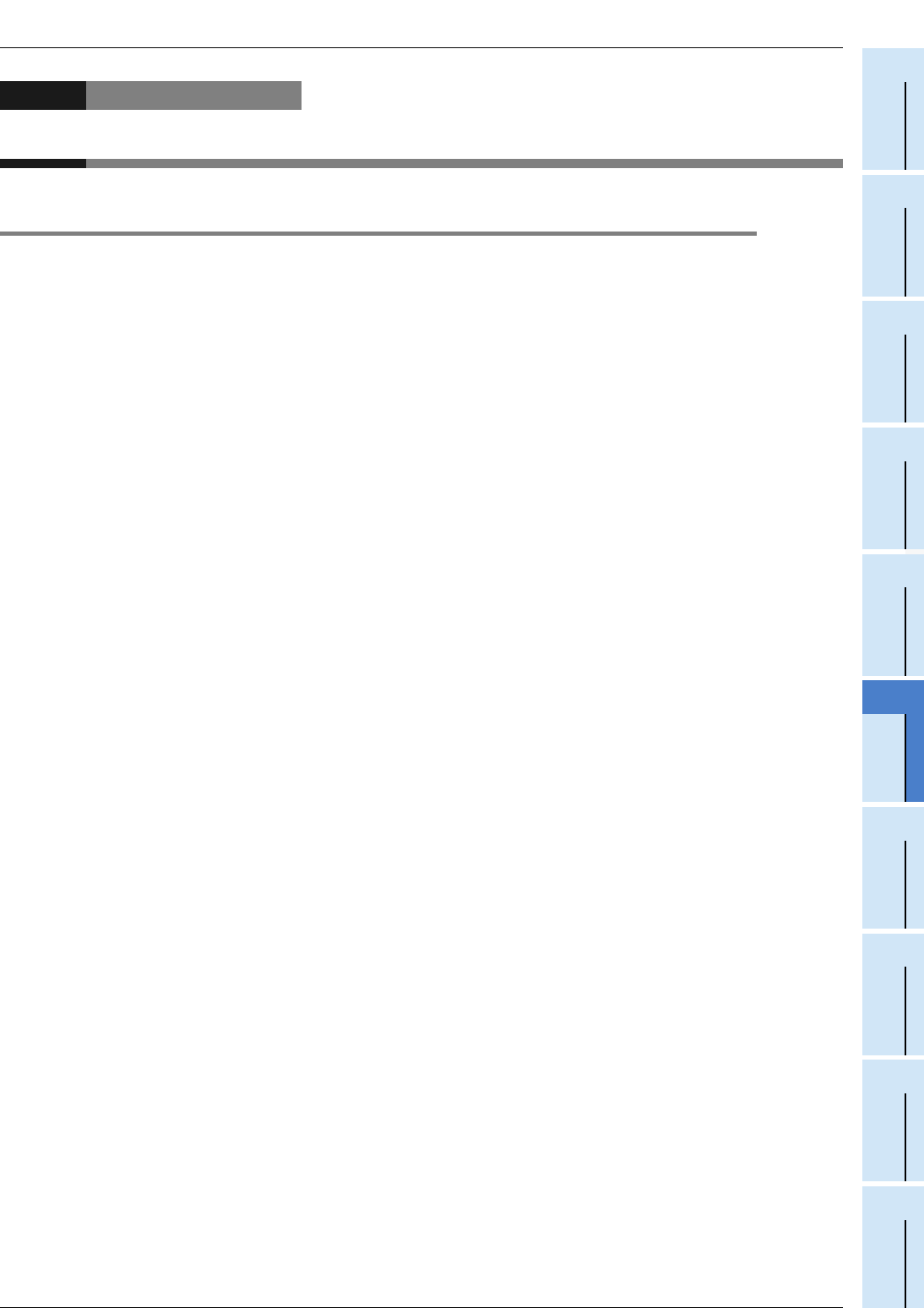
6 Functions
6.1 Details of functions
33
FX3U-CF-ADP User's Manual
1
Introduction
2
Specification
3
System
Configuration
4
Installation
5
Wiring
6
Functions
7
Before
Programming
8
CF-ADP Applied
Instructions
Explanation
9
Program
Examples
10
Troubleshooting
6. Functions
6.1 Details of functions
The user can perform the following procedures for CompactFlash
TM
cards using applied instructions for the
CF-ADP.
• Creating FIFO function files inside the CompactFlash
TM
card.
(Only one pattern is available for FIFO function files. Multiple FIFO function files are created automatically
with a predetermined file name. If the created FIFO function files exceed the allowable capacity, old files
are deleted. The FIFO function is executed in units of files.)
• Creating files inside the CompactFlash
TM
card.
(Up to 63 files can be created.)
• Deleting specified files stored in the CompactFlash
TM
card.
• Writing bit data, word data, double-word data, floating point data and character string data to a specified
file stored in the CompactFlash
TM
card.
Data can be written to the CompactFlash
TM
card using the following two methods:
- Data is directly written to the CompactFlash
TM
card without using the internal buffer. Up to 254 data
points can be written to one line.
- Data is collected in the internal buffer. When the internal buffer becomes full, data is written to the
CompactFlash
TM
card. Up to 254 data points can be written to one line.
• Forcibly writing data of a specified file stored in the internal buffer to the CompactFlash
TM
card.
• Reading the number from the final line in a specified file stored in the CompactFlash
TM
card.
• Reading the data from a specified line in a specified file stored in the CompactFlash
TM
card.
(Up to 254 data points can be read from one line.)
• Writing the data name.
(Up to 254 data points names can be written.)
• Formatting the CompactFlash
TM
card.
• Sending a mount command to the CompactFlash
TM
card.
• Sending an unmount command to the CompactFlash
TM
card.


















